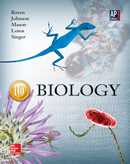1 A) to provide a means of identifying identical DNA sequences. B) as a forensics tool to provide evidence in a criminal case. C) to identify genetic diseases. D) to sequence fragments of DNA. E) for all of the above. 2 A) E. coli. B) S. aureus. C) V. laevis. D) A. tumefaciens. E) B. thuringiensis. 3 A) complementary double-stranded ends. B) supplementary single-stranded ends. C) double-stranded "sticky" ends. D) complementary single-stranded ends. E) double-stranded supplementary ends. 4 A) while it is toxic to insects, it is a normal metabolite for animals. B) animals do not produce aromatic amino acids so Bt toxin cannot be incorporated into metabolic pathways. C) it is destroyed by acids in the stomach. D) animals lack the enzymes to convert it to the toxic form. E) animals have the enzymes to convert it to a nontoxic substance. 5 A) DNA is generally positively charged due to its nitrogenous bases so an electrical field forces it to move toward a negative pole. B) Gravity. C) The strong positive charges from the phosphate groups in the DNA backbone cause it to migrate toward the negative pole. D) Diffusion. E) The strong negative charges from the phosphate groups in the DNA backbone cause it to migrate toward the positive pole. 6 A) Damage to DNA is hard on the organism, so resistance to drugs and pathogens allow for more survivors of this rough treatment. B) The genes which are removed through in vitro mutagenesis are usually involved in creating antibiotics. This drug resistance allows cells in which these genes are disrupted to still survive. C) The new breeds of organism are of scientific interest only if they have new abilities as compared to the "normal" line from which they were derived. D) Resistance to drugs is a function of being able to modify DNA quickly, so this allows faster formation of knockout lines. E) Knockout lines are easily identified because when exposed to the drug, the nonrecombinant cells all die. 7 A) Vaccines are all safe. B) Because it's a subunit vaccine, the immune system of the person being inoculated is not involved. C) Because of the precision with which transgenic viruses can be constructed, side effects from vaccination are unlikely. D) DNA is not involved in making this vaccine, only proteins from the infectious agent. E) Only a surface protein from the original infectious agent is involved, other genes involved in the infection cycle are carefully excluded. 8 A) that companies would not be able to keep up with the demand for the new variants because they are so popular. B) because we understand so little about how a gene gives rise to a particular protein, we have no idea if introducing new genes into organisms will work or not. C) introgression (horizontal transfer) of genes from agricultural varieties to wild plants would render commercial herbicides ineffective. D) rapid mutation of the genomes of agriculturally important plants could threaten our food supply. E) scientists have no evidence that an introduced gene will behave in any way similar to how it operated in the original organism. 9 A) They help identify mutated regions in the chromosome and initiate the excision repair pathway. B) By selectively binding to particular nucleotide sequences that may appear in viral DNA, the cell can protect itself from infection. C) These help the bacterium open up the DNA in their chromosomes so that transcription is easier. D) They help the bacterium take up foreign DNA from their environment and combine it into their genome. E) All of the above are reasons for bacteria to contain restriction endonucleases. 10 A) DNA-binding regions of the probe form motifs that can align along the major groove and "read" the appropriate sequence. B) Probes will cut and integrate into specific regions of the DNA being analyzed, thereby marking the desired location. C) Base-pairing between single-stranded probes and denatured target DNA allows them to anneal. D) Reverse transcriptase amplifies the probe, which can then attract the target sequences from the DNA under analysis. E) The probe integrate into non-coding regions during the process of splicing. 11 A) Southern analysis B) PCR C) RFLP analysis D) Northern analysis E) Both Southern analysis and PCR can be used to quantify gene expression. 12 A) To see the effect of a gene product in an alternate location, or even a completely different species from which the gene was cloned. B) The make many more copies of the cloned gene in order to get sufficient quantities for analysis. C) To remove a particular gene from an organism in order to see how it operates without instructions from that particular locus. D) All of the above are reasons for using an expression vector. E) None of the above are reasons for using an expression vector. 13 A) It is cheap, because many viruses (each containing new genes) can be applied to many patients. B) By adding new genes, the children of the treated individual will also be free of the disease. C) DNA has a tendency to become replicated, so only a small dose can have a large impact on the treated individual. D) Many genetic diseases arise because the individual lacks a particular gene. Gene therapy provides a "working copy" of the gene. E) All of the above are bases for gene therapy effectiveness. 14 A) manipulating the genome of a commonly-grown agricultural species of plant. B) introduction of DNA from both prokaryotes and other eukaryotes not closely related to the rice plant. C) a public facility, and distributed without commercial restraints. D) All of the above. E) None of the above. 15 A) corn. B) rice. C) wheat. D) soybeans. E) barley.





